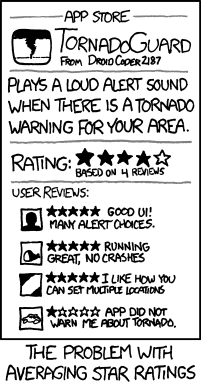One of the first things I learned as a junior lawyer was that if a court makes an order, you obey it. It didn't matter if it was something as simple as directions for dates of filing documents - you simply obeyed the court's order.
Why?
- Because the court said so - that is one of the foundations of a civil society.
- Because as a lawyer who complies with orders you gain credibility with the court, and when the day comes that you need a judge to take you at your word as an officer of the court, you need to be able to be trusted.
In
Samsung Electronics (UK) Limited v Apple Inc [2012] EWCA Civ 1430 (UK Court of Appeal, 9 Nov 2012) the court dealt with non-compliance, and made a number of orders against Apple, as well as some unpleasant observations.
What happened? The court had previously ordered Apple to:
- place a specified notice on its web site within 7 days; and
- place specified advertisements in specified newspapers and magazines within 7 days or in the earliest available issue.
Apple Inc was represented in the proceedings by Freshfields Bruckhaus Deringer, and Samsung by Simmons & Simmons.
The text of the notice was specified in an Order of the court. Apple acted in what can only be described as a childish and petulant manner and failed to comply with the order. Let's have a look at the behaviour of Apple and the comments of Sir Robin Jacob (with unanimous agreement from Kitchin LJ and Longmore LJ) in the Court of Appeal...
A. Apple chose not to place the advertisements in the first available issue. It acted in such a way as to ignore the court's order, replacing it with a decision of a marketing and comms person, and "coordinate" the advertisements.
B. Apple simply failed to post the court-ordered notice. It placed words of the notice together with its own text interspersed. That was not compliance with the order.
C. Apple's actual text was even more invidious, in that it made misleading and deceptive statements - in relation to litigation, registered designs and patents. At its best, it can only be said that it must have been drafted by someone who knew nothing whatsoever about the court case. The court said "the matter added was indeed false." However, I may be too charitable about the author's intentions. The court said that it revealed "a fundamental misconception" about what the case was about.
D. The Apple statement referred to patent litigation. 'No patent of any kind has been involved in Germany or here, still less "the same patent."'
E. The Apple statement referred to a design judgement which had already been revoked.
F. The Apple statement made derogatory imputations about the British legal system, which were built upon by sites such as The Register.
G. Apple claimed it would take 14 days to put the notice on its home page "for technical reasons." However, when asked to put on an affidavit as to why it would take 14 days, Apple's claim mysteriously disappeared. The court said "I hope that the lack of integrity involved in this incident is entirely atypical of Apple."
It also ordered
indemnity costs against Apple. Indemnity costs are not often awarded - in Australia (similar to the UK) some of the bases for indemnity costs are: hopeless cases, fraud and misconduct, unreasonable conduct or "relevant delinquency", and abuse of process (
Judicial Commission of NSW).
A few quotes from the lead judgement:
"I do consider that adding false and misleading material was illegitimate. "
"The false innuendo is that the UK court came to a different conclusion about copying, which is not true for the UK court did not form any view about copying. There is a further false innuendo that the UK court's decision is at odds with decisions in other countries whereas that is simply not true."
"The reality is that wherever Apple has sued on this registered design or its counterpart, it has ultimately failed. It may or may not have other intellectual property rights which are infringed. Indeed the same may be true the other way round for in some countries Samsung are suing Apple. But none of that has got anything to do with the registered design asserted by Apple in Europe. Apple's additions to the ordered notice clearly muddied the water and the message obviously intended to be conveyed by it."
"Finally I should mention the time for compliance. Mr Beloff [Apple's senior counsel], on instructions (presumably given with the authority of Apple) told us that "for technical reasons" Apple needed fourteen days to comply. I found that very disturbing: that it was beyond the technical abilities of Apple to make the minor changes required to own website in less time beggared belief. In end we gave it 48 hours which in itself I consider generous. We said the time could be extended by an application supported by an affidavit from a senior executive explaining the reasons why more was needed. In the event no such application was made. I hope that the lack of integrity involved in this incident is entirely atypical of Apple."
One matter that wasn't dealt with by the court was that many publications have stated that Apple had also posted the notice with scripting elements that caused it to be forced well below the normal readable part of the page, regardless of how tall the user's screen was.
The problem is - is the lack of integrity displayed actually atypical of Apple, or does it think it can treat court orders (and perhaps your data) contemptuously? If it doesn't obey court orders, why would it obey laws that require it to keep your data confidential, or look after your privacy?







.png)



